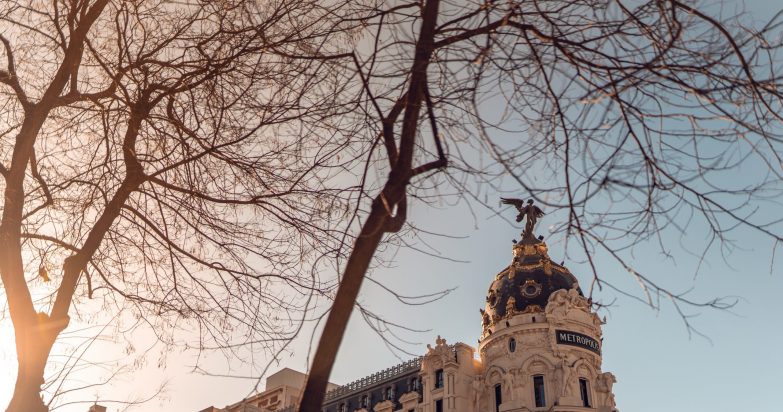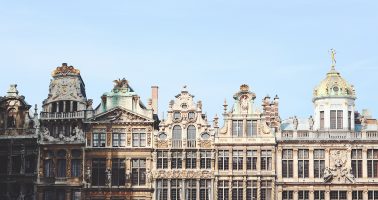One of the most recognizable things in any city is its skyline full of emblematic buildings and monuments. Madrid is no exception as there is an abundance of stunning architectural wonders to behold in the Spanish capital. Madrid is an exciting place to be for those that are interested in art and design since there are amazing examples of both historical and contemporary architecture everywhere you look.
As you make your way across the city, you’ll notice that there are monuments and buildings, both old and new, that help tell the city’s story. While there are tons of examples of impressive architecture in Madrid, here are seven sites to map out and marvel at as you explore the city.
Palacio Real de Madrid & catedral de la Almudena
The first stop on your architectural tour of Madrid should be the Palacio Real, the largest royal palace in Europe. It’s so massive that there are 3,418 rooms, only a few of which are open on the tour route through the palace. The tour route changes every few months, so it’s possible that you’ll see new parts of the palace every time that you visit. While it’s technically the official residence of the Spanish royal family, it’s really only used for state ceremonies these days.
The palace as we know it today stands on the ruins of a Moorish castle that was built between the years 860 and 880. Centuries later, it was renovated and expanded in 1537 and continued to grow under various monarchs until 1734, when a fire caused extensive damage. After the fire, the Italian architect Francesco Sabatini designed the Neoclassical palace that has since become a symbol of Madrid. The palace’s gardens are named after him.
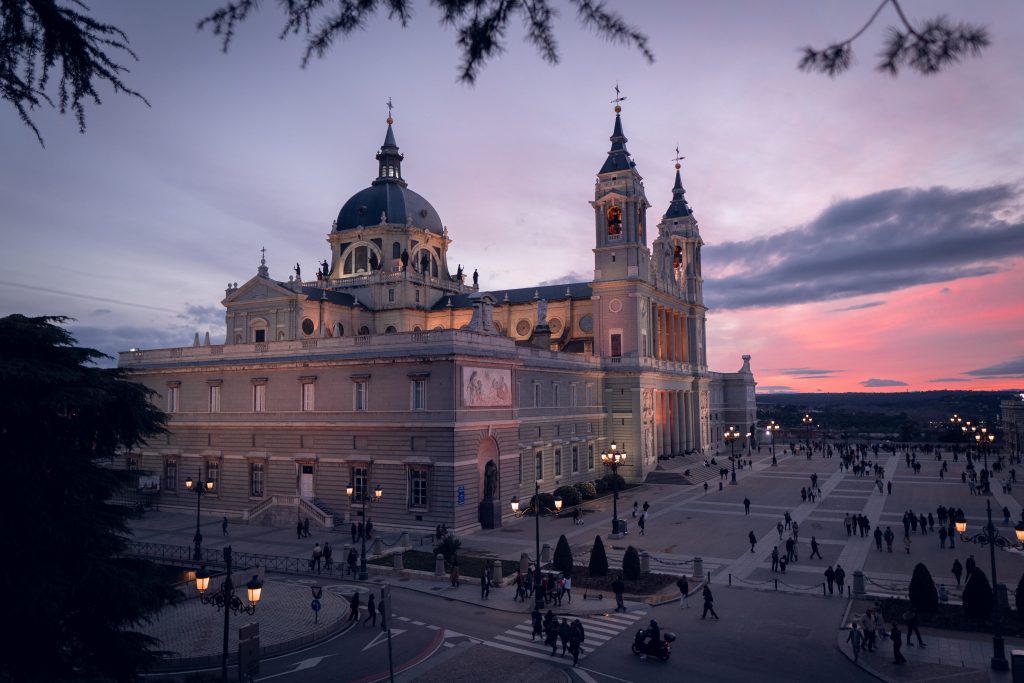
Right across the plaza from the palace is the Catedral de la Almudena, which was built in the late 1880s. It, too, stands on historical ruins, as experts believe that the site was once a medieval mosque that was destroyed when the Spanish conquered the Moors. Since it’s quite modern, this cathedral boasts a Neo-Gothic style that is the result of several famous architects, as well as a Neo-Romanesque crypt where several notable Spaniards are buried.
CaixaForum
One of Madrid’s most unique and innovative buildings is CaixaForum, a cultural center that features rotating exhibits and events. Completed in 2007 by Swiss architects, this building is unique both on the inside and outside. The most stunning feature is the exterior vertical garden that climbs up the side of one of the building’s walls. It’s 78 feet tall and boasts more than 15,000 plants from 250 species that receive recycled water from perforated pipes. The garden is a mesmerizing work of art that’s also accompanied by a refreshing pond in front.
Inside, you can cruise through CaixaForum’s exhibits that touch upon topics like art, history, and science while soaking in the modern architecture of the building itself. The eye-catching central stairway is a doozy, so be sure to look down once you’re at the top!
Parque del Retiro
Parque del Retiro is one of Madrid’s largest parks and most important green lungs where madrileños can kick back, relax, and escape the hustle of the city. The land that the park stands on was used by the Spanish monarchy for several purposes until the park itself was commissioned in the 1630s. Boasting ponds, chapels, and gardens, El Retiro became known as a public work of art during its time and an important part of daily life for the royal family.
Today, this massive park covers 125 hectares and has 15,000 trees. It’s a UNESCO World Heritage Site that provides locals and tourists alike the chance to take in a breath of fresh air in the heart of the city. Inside the park, you’ll find people picnicking, strolling, and riding bikes. Others stop to marvel at the Palacio de Cristal, a bonus architectural marvel, or take a boat ride through one of the park’s ponds. El Retiro is packed with sculptures, fountains, and galleries that feature art from the Museo de Reina Sofía. As you can see, there’s so much to do here that it’s easy to spend hours exploring this park and all the surprises that it holds.
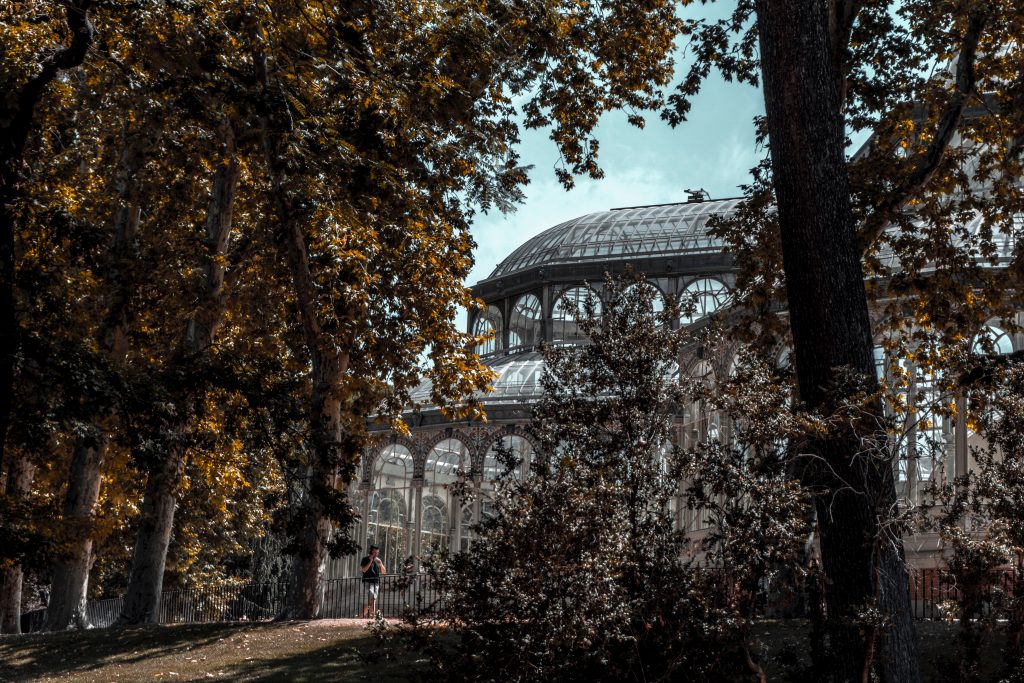
Santiago Bernabéu stadium
Home of the Real Madrid soccer team, Santiago Bernabéu Stadium is open almost every day of the year for fans to come and marvel at its size and wonder. It’s quite massive, being the second-largest stadium in the country and seating more than 83,000 occupants. The stadium has undergone several adaptations and renovations over the decades to accommodate the sheer number of fans that pack in on game day and to comply with safety and game rules and regulations. The stadium is currently undergoing renovations to add an extra tier of seating, which tacks on an additional 4,000 occupants to its capacity.

You can’t miss the stadium from the outside, as its unique design and features are unmistakable. The facade has a swirling pattern and chrome finish that makes it look sleek and modern. One new feature that will be part of the renovation is a matching retractable roof so that games can continue no matter the weather. Seeing the stadium and taking a tour is one of the most popular things for visitors to do when they arrive in Madrid.
Plaza de Toros de las Ventas
Bullfighting is synonymous with Spain, even though it has become somewhat controversial in recent years. Even so, many cities across the country boast their own plaza de toros, or bullring, including The Plaza de Toros de las Ventas, which first opened in 1931, is the largest of its kind in Spain and can hold nearly 24,000 spectators.
Stopping by the Plaza de Toros, even just from the outside, is a must to see its beauty and detail. Covered in hand-painted tiles, this building was designed in a Neo-Mudéjar style that calls back to Spain’s Moorish roots. As you take a walk around the structure, you’ll notice all the small, glassless windows cut out of the facade, reminiscent of a palace that you might find in the south of Spain. Inside, in addition to the bullring, the Plaza de Toros has a bullfighting museum for visitors to tour, as well as a chapel.

Museo Nacional Centro de Arte Reina Sofía
The Reina Sofía is Spain’s national museum dedicated to contemporary art from the 20th century. Even though it holds many artistic treasures inside its galleries, the neoclassical building itself is quite spectacular to see. From the 16th century until 1965, the space was used as a hospital, and many of the architectural designs were planned out by Sabatini. In 1965, the hospital was closed and renovations to turn the building into an art center started in 1980.
While the original building still stands, modern touches have been added over the years. The most noticeable changes are the three glass elevator shafts on the exterior that give the building a more modern look and feel while still preserving its history. The interior features simple galleries that don’t distract from the art, as well as the building’s original hallways and style, giving a nice contrast of new and old.
Metropolis building
There’s no doubt that you’ve seen a picture of the Metropolis Building before if you’ve ever browsed through photos of Madrid before. Located on the corner of bustling Gran Vía and Calle Alcalá, this office building was designed in a Beaux-Arts style, which wasn’t the norm when it was built in the early 20th century. It has ornate Corinthian columns, a dome made of slate with gold details, and a statue called Winged Victory on top of the dome that overlooks the street below. Standing at 45 meters tall, it was the tallest building in Madrid for many years.
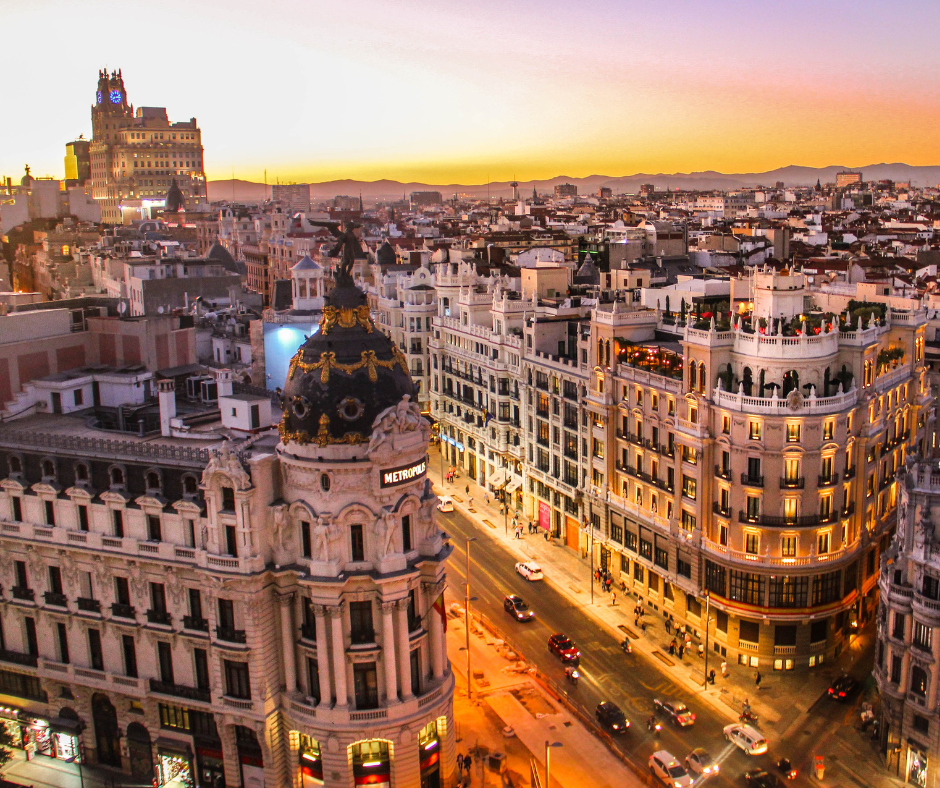
Today, tourists and locals alike stop to take in the beautiful view of the building as they stroll down Gran Vía, one of the busiest thoroughfares in the Spanish capital, and it still never gets old. The Metropolis Building is a favorite spot to stop and take a selfie, especially if you can snap a shot from a rooftop nearby.
Get to know Madrid’s most iconic buildings
If you’re moving to Madrid, you have plenty of time to discover all of the most impressive architecture and buildings in Madrid. This list is just a small sample of what’s in store, as there is so much more to discover. Madrid attracts all kinds of people who want to experience the Spanish way of life, but it’s especially popular with young professionals who are looking to live and work in a thriving metropolis.
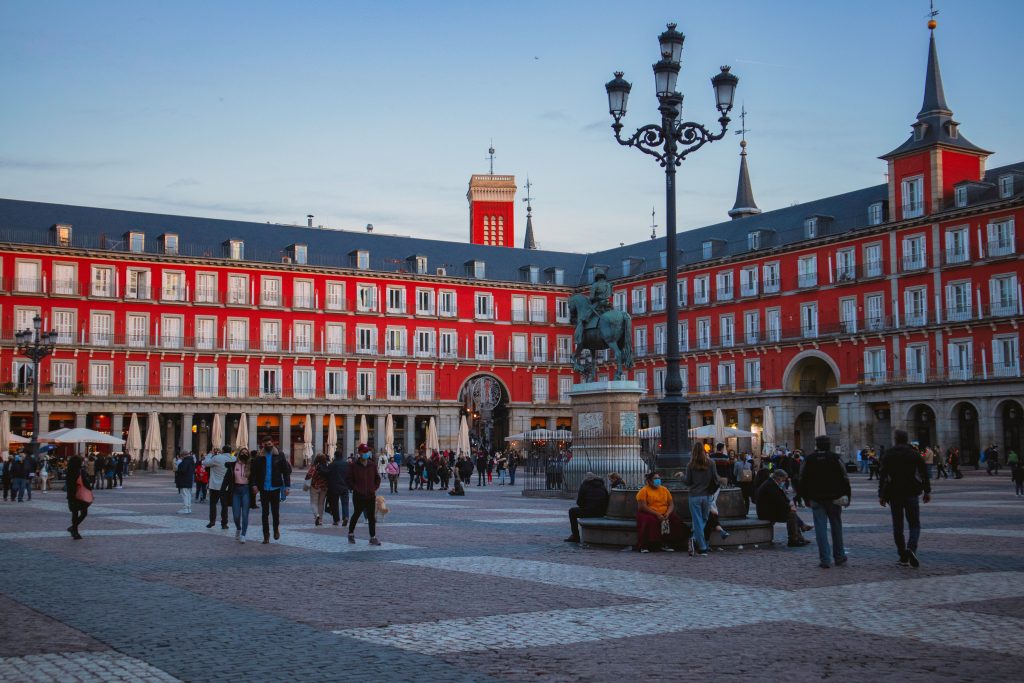
Remote workers, digital nomads, and other workers are finding Madrid’s stimulating environment to be both creative and urban, making it an easy choice to stay and live for a while. One way to live here is by trying coliving, a way to live and work while surrounded by like-minded professionals. (Read this if you’re looking for coworking hotspots in Madrid.) Cohabs has several homes ready in Madrid where you can set up base as you explore living and working in the Spanish capital. There’s plenty to see and do, and coliving offers a flexible way of living and working for those who want to get to know Madrid from the inside out.
